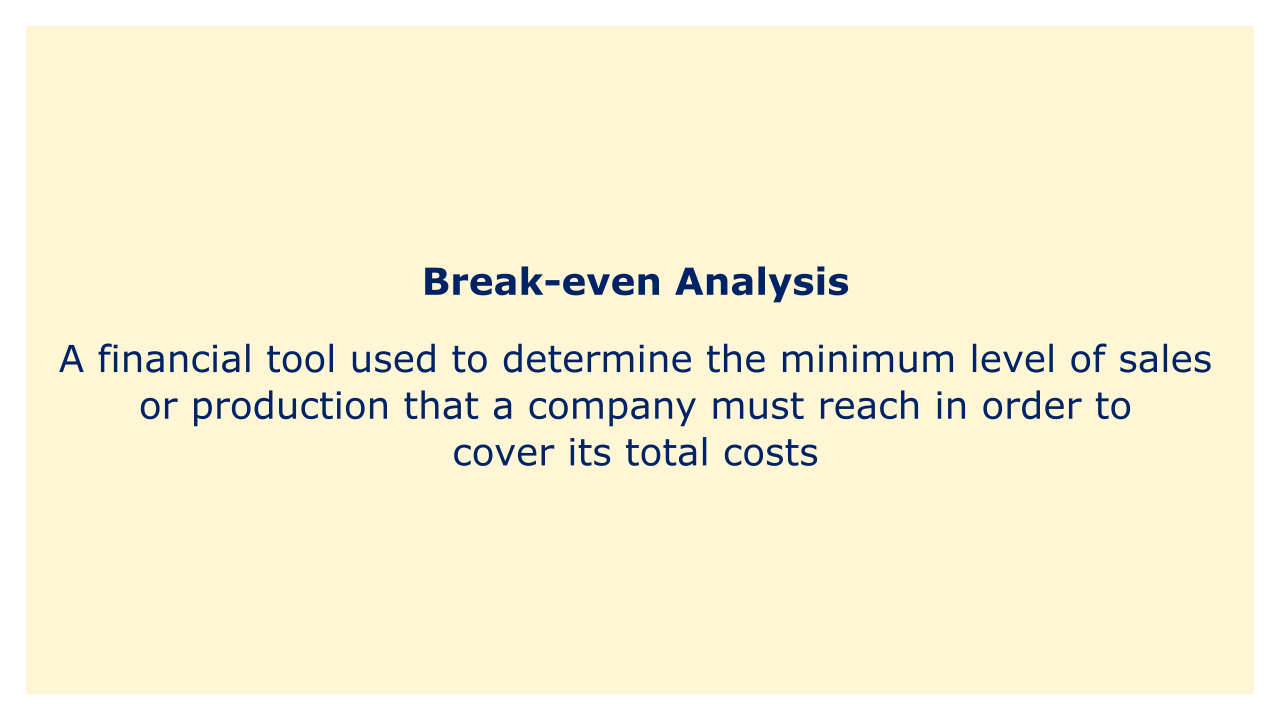 |
| Image: Moneybestpal.com |
A financial tool called break-even analysis is used to calculate the least level of production or sales that a business needs to achieve in order to cover all of its costs. It assists a business in figuring out the point at which income equals expenses and a profit is made.
The company must first identify its fixed costs or costs that don't change no matter how many units are produced or sold, in order to conduct a break-even analysis. This covers expenses including rent, wages, and insurance. The business then determines its variable costs, which fluctuate according on the quantity produced or sold. These expenses may include freight, labor, and supplies.
Calculating the break-even threshold requires first determining the fixed and variable costs. The formula for calculating this is to divide the fixed expenses by the discrepancy between the unit price and the variable cost per unit. For instance, if a business has $100,000 in fixed expenditures, $10 in variable costs per unit, and sells each unit for $15, the break-even point would be calculated as follows:
$100,000 ÷ ($15 - $10) = 20,000 units
To break even, or to cover its expenses and make a profit, the corporation needs to sell 20,000 units.
Companies can use break-even analysis to determine the minimal level of sales they must reach to turn a profit, which is a useful technique. It also aids in making educated decisions about pricing, manufacturing, and investment plans as well as determining the effect that changes in unit price, variable costs, and fixed costs will have on the break-even point.
